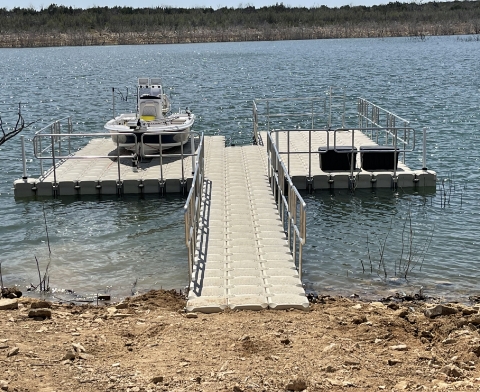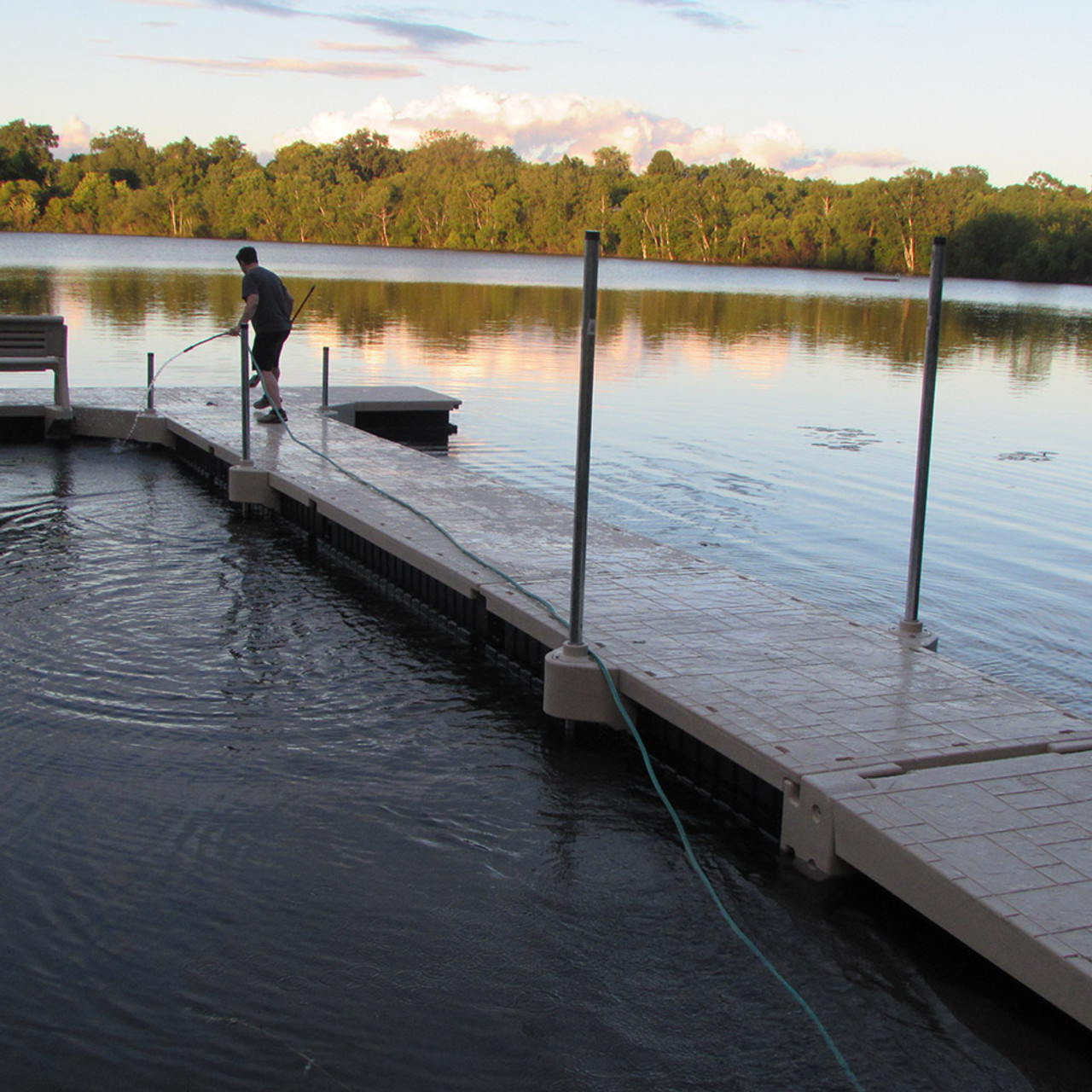The Ultimate Guide to Selecting the most effective Floating Docks
Selecting the ideal floating dock needs a comprehensive understanding of numerous aspects that influence both performance and durability. Factors such as dock kinds, materials, and essential functions considerably impact your decision-making procedure.
Recognizing Floating Dock Kind
When choosing a drifting dock, it is important to understand the numerous types readily available, as each serves distinct functions and applications. Floating docks largely fall under three classifications: modular, fixed, and pontoon docks.
Modular docks are composed of private areas that can be quickly set up or reconfigured, making them ideal for transforming water degrees and varied uses, such as commercial operations or leisure tasks. Their adaptability permits customization based upon certain needs.

Pontoon docks are characterized by their resilient framework, typically composed of multiple pontoons that supply stability and assistance. They are especially appropriate for bigger vessels and are frequently used in marinas or for waterside residential properties. Understanding these kinds help in selecting the most ideal floating dock to satisfy certain needs, making sure optimal performance and safety and security.
Key Products for Resilience
Choosing the appropriate materials for floating docks dramatically impacts their sturdiness and long life. The most typical products consist of timber, plastic, metal, and composite materials, each offering distinctive advantages and restrictions.
Timber, often favored for its visual appeal, needs normal upkeep to stand up to moisture and decay. Pressure-treated lumber can improve resistance to rot, yet it might still be at risk to pests and weathering.

Plastic docks, made from high-density polyethylene (HDPE), are resistant to rust, UV radiation, and impact, making them a popular selection for coastal environments. Their light-weight nature likewise helps with very easy setup and relocation.
Steel docks, typically created from aluminum or galvanized steel, give outstanding stamina and resilience. They are resistant to deterioration, especially when dealt with, however might need added insulation to stop heat buildup in hot environments.
Composite materials, incorporating wood fibers and plastics, provide the benefits of both timber and plastic, resisting moisture and fading while calling for very little upkeep. - floating dock company
Inevitably, the selection of materials must align with environmental conditions, planned usage, and upkeep preferences to make sure the floating dock stays useful and visually pleasing with time.
Vital Attributes to Consider
While the option of products is important, taking into consideration vital attributes for floating docks is equally crucial to make certain optimal efficiency and customer complete satisfaction. One vital feature to evaluate is the dock's buoyancy capability, which establishes just how much weight it can sustain without immersing. floating docks. This is important for fitting watercrafts, individual watercraft, and even entertainment tasks
Additionally, mobility is a considerable factor to consider. Relying on your demands, you might want a dock that is very easy to disassemble and carry, especially if you intend to transfer it seasonally. Security is another vital function; a well-designed floating dock should minimize movement brought on by wind and water currents, providing a secure system for customers.
Safety and security attributes, such as non-slip surface areas and rounded edges, are also critical to avoid crashes, specifically in wet conditions. Take into consideration the accessibility of accessories, such as cleats, ladders, and bumpers, which can enhance the capability of your dock.
Installment and Maintenance Tips
Setting up and keeping a floating dock requires cautious planning and focus to detail to ensure its durability and optimal efficiency. Begin by choosing an appropriate area that lessens direct exposure to strong currents and waves, which can create damage. Guarantee that the water depth suffices for the dock's height and that it is anchored firmly to stop movement.
Throughout setup, follow the supplier's guidelines closely, as incorrect assembly can endanger stability. Usage high-grade materials immune to rust, such as aluminum or treated timber, to boost longevity. Regularly evaluate all elements, including drifts, ports, and anchoring systems, for indicators of damage or wear.
Maintenance is critical for prolonging the life of your dock. Tidy the surfaces occasionally to protect against algae accumulation and check for any kind of loose installations that may need firm. Ensure they remain visit homepage intact and complimentary from punctures if your dock uses flotation devices. Furthermore, think about using safety coatings to wooden components to decrease weathering impacts. By sticking to these installment and maintenance pointers, you can appreciate a trustworthy and useful floating dock for several years ahead.
Budgeting for Your Dock
Budgeting for your dock is a critical step that can considerably affect your general satisfaction and investment in a waterside residential or commercial property. Developing a clear budget helps you browse the numerous choices available and guarantees you make educated decisions that line up with your financial capabilities.
Begin by identifying the size and layout of the dock you need, as these aspects will substantially affect the price. Floating docks can vary substantially in cost, depending on materials, buoyancy, and features like ramps and devices. Research study different suppliers and suppliers to contrast costs and comprehend the marketplace value.
In addition to first prices, take into consideration recurring expenditures such as maintenance, insurance coverage, and possible fixings. Assign funds for these recurring prices to stay clear of surprises down the line. It's additionally prudent to allocate any kind of needed permits or evaluations, which might be required by regional laws.
Finally, maintain in mind the potential return on financial investment. A well-planned dock can improve your home's worth and allure, offering a favorable financial effect in the long-term. By budgeting effectively, you can make sure that your dock fulfills your needs without jeopardizing your economic stability.
Conclusion
In conclusion, choosing the optimal floating dock demands a complete assessment of various variables, including dock kinds, products, important attributes, and setup processes. Cautious consideration of financial restrictions will certainly even more ensure an audio investment.

While the option of products is crucial, thinking about necessary attributes for floating docks is equally important to make certain optimal performance and individual contentment.Establishing up and maintaining a floating dock requires careful planning and attention to detail to ensure its durability and ideal performance. Floating docks can vary sites considerably in cost, depending on materials, home buoyancy, and functions like ramps and devices.In final thought, choosing the excellent floating dock demands a detailed analysis of various factors, including dock kinds, products, crucial features, and installation procedures.